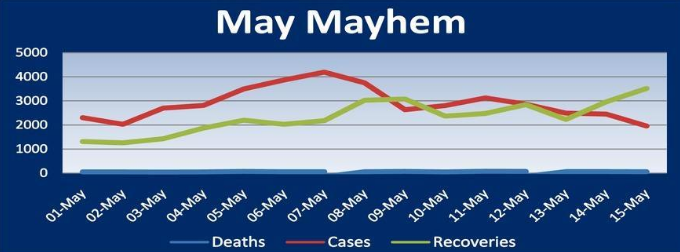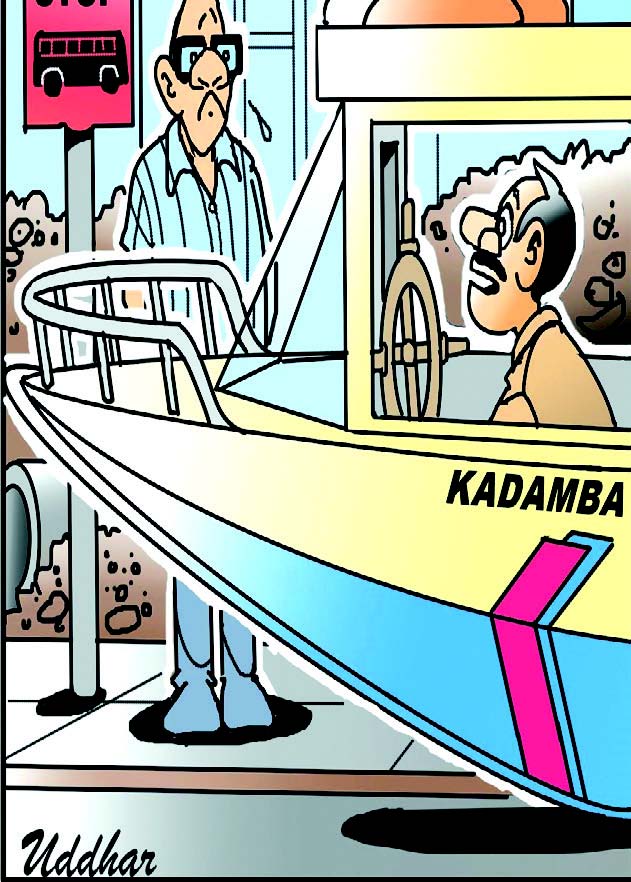
Alexandre Moniz Barbosa
A month ago, on April 15, Goa’s total COVID-19 cases stood at 64,572. On that day they had risen by 757 cases, the highest spike in the State. The government was not unduly perturbed by this. Goa remained open for tourism with no checks of incoming travellers. Nobody predicted that the figure of 64,572, a cumulative figure of over 12 months, would have more than have doubled less than a month later. On May 15, the number of cases was 1,34,542. Deaths had risen, and the high court had taken cognizance of the situation in the State. In the past four weeks Goa has experienced an upheaval like never before, yet few lessons appear to have been learnt.
Goa is exactly in the middle of a 15-day curfew. People are allowed to go out for essential shopping up to 1 pm every day. The streets are practically deserted after that, with only delivery staff and vehicles seen moving. Yet, the ongoing curfew has not stopped tourists from visiting Goa. The government has permitted hotels to stay open and allowed tourism on the condition that the tourists stay inside the hotel and not step out. But is it feasible to keep a tourist indoors? The case of a tourist drowning in Baga last week is a clear indication that even the curfew and rough seas will not stop visitors from venturing into the sea. This particular tourist, who died due to drowning, broke the curfew, ignored the weather warning of storm and overlooked the requests of the lifeguards to stay away from the water. The red flags on the beach also apparently meant nothing to him.
It is precisely this nature of the tourists who ignore all warnings that leads to death due to drowning. It is also precisely such tourists who give the Goan beaches a bad name. Again, it is precisely these tourists who thronged to Goa in the past month to escape the lockdowns of their States and brought with them the mutant coronavirus that is killing people in Goa. The Goan economy needs tourism to survive, that is understood, but when cases were rising in the State, and when the Maharashtra government listed Goa as a ‘place of sensitive origin’ seeking a Covid negative certificate from travellers originating from Goa due to surge of Covid cases, the Goa government scrambled to ask their Maharashtra counterpart to withdraw the order. Instead of learning from the Maharashtra listing and taking measures to put its house in order, Goa took this ‘place of sensitive origin’ term as an affront.
The show went on, and the State was scripting Act 2 of the pandemic even as it was playing out in the testing centres and Covid hospitals. Goa imposed no curbs on travellers. It instead kept its borders wide open and a few days later was grappling with cases and deaths that were unprecedented.
Around this time a year ago, after having been in the green zone for some three weeks, Goa reported new COVID-19 cases of travellers who had arrived by car. A couple of days later and trains rolled in, halting at designated stations – Margao being one of them – and the numbers increased. It wasn’t long before the virus spread from the travellers to the local population and then there was no stopping it. Or so we thought at that time, never imagining a day 12 months later when the coronavirus would have engulfed the State. Goa had experienced how travellers brought in the virus and passed it on. In fact on May 13 last year, Chief Minister Dr Pramod Sawant, speaking on the train services that were to resume had said, “People cannot come and enjoy in Goa. We are not going to allow that. Many people would want to come, just because trains have been announced. Once they arrive here, they will have to compulsorily stay put in quarantine for 14 days.”
How quickly those words were forgotten and nothing learnt from the experience of the last year. Goa has truly been living in a world where the dictum is ‘bhivpachi garaz nam’ and breathing an air permeated by the virus. But sometimes, one needs to be afraid so as to take efficient decisions. And this is one of those times.
It has been a series of errors in judgement that have led to the current situation. In hindsight we can only ask whether seeking Covid negative certificates from travellers might not have led to the situation that we are currently in. While this cannot be said with all certainty, there exists the possibility that the entry of the mutant strains into the State, that are creating havoc today, could have been slowed down. These were certainly transported to the State by those attempting to escape the lockdowns of their States on the open for tourism beaches of Goa and the casinos that remained operational until the last week of April. It was a high cost that is being paid for in the current days, as young men and women who were full of life just weeks earlier exit the hospitals in body bags.
The experience of the second wave is a costly lesson for the State government and the people, especially the people who have lost loved ones. The mistakes made by the administration in planning and preparing for the second wave cannot be repeated should a third wave of the virus arise. The numbers, after the lockdown, the restrictions and one week of curfew are showing a decline. Once the cases of the current wave subside, Goa cannot relax, but has to be alert to any change in the graph indicating a consistent rise so as to bring in measures to contain the growth even before it can begin its ascent. Though viruses are known to weaken with time, the planning should be for a far more deadly third wave so that it can be tackled better. There can be no excuse for the mismanagement that can be witnessed in the current second wave, if there is another devastating third wave. The failure of the administration cannot be condoned.
Alexandre Moniz Barbosa is Editor, Herald. He tweets at @monizbarbosa
